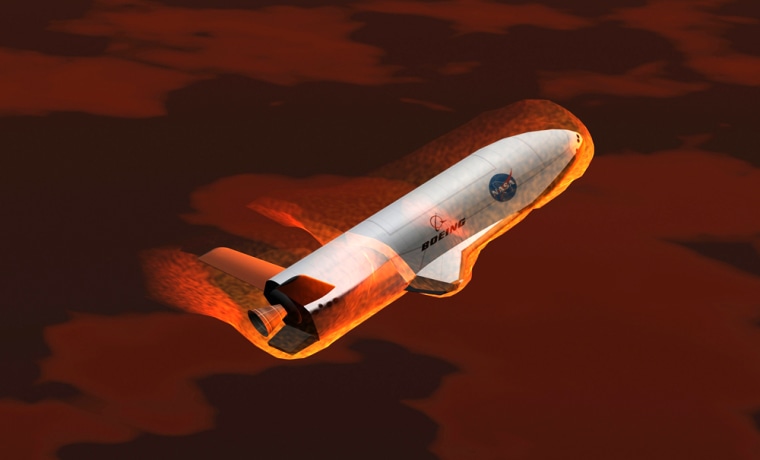There’s new military life in an old NASA project — the X-37 technology demonstrator. The U.S. Air Force announced Friday that it is developing an Orbital Test Vehicle, or OTV, based on the design of a NASA X-37 craft.
It is to be designated the X-37B Orbital Test Vehicle.
The U.S. Air Force has decided to continue full-scale development and on-orbit testing of an unmanned long-duration, reusable space vehicle. The new OTV effort blends industry funding with government investments from the Air Force, NASA and the Defense Advanced Research Projects Agency.
The OTV effort will be led by the Air Force Rapid Capabilities Office and includes partnerships with NASA and the Air Force Research Laboratory. The Boeing Co. is the prime contractor for the OTV program — the same firm that was the lead on the old NASA X-37 technology demonstrator.
According to a statement from the secretary of the Air Force, the OTV program will focus on “risk reduction, experimentation, and operational concept development for reusable space vehicle technologies, in support of long-term developmental space objectives.”
First flight
The first orbital test flight of the OTV is planned for fiscal year 2008, with a launch from Cape Canaveral Air Force Station on an Atlas 5 launch vehicle.
The OTV would be the first vehicle developed since the space shuttle with the ability to return experiments to Earth for further inspection and analysis.
Slideshow 12 photos
Month in Space: January 2014
That maiden orbital flight of the X-37B would demonstrate and validate guidance, navigation and control systems — fault-tolerant, autonomous re-entry and landing hardware. Also on tap is a shakeout of lightweight high-temperature structures and landing gear.
Either Vandenberg Air Force Base or Edwards Air Force Base — both in California — will conduct re-entry and recovery activities.
When last seen under DARPA program management, the X-37 technology demonstrator — also dubbed the Approach and Landing Test Vehicle — went through a series of taxi and air tests out at California's Mojave Airport, toted by the White Knight. White Knight is the Scaled Composites mothership that carried the privately-built suborbital SpaceShipOne to high-altitude release.
Beyond Future X
On April 7 of this year, the X-37 robotic space plane was dropped at high altitude, touching down under autonomous control. It encountered difficulties while landing, however, and rolled off the end of a runway at Edwards Air Force Base.
When the X-37 was under NASA’s wing in the late 1990s, it was to be the first of a planned series of flight demonstrators under the rubric of Future X.
The Boeing-built X-37 was billed at the time as an unpiloted, autonomously operated vehicle designed to conduct on-orbit operations, collect test data and re-enter the atmosphere at velocities 25 times the speed of sound.
Those early plans for the X-37 called for it to be hauled into orbit by the space shuttle or lofted atop an expendable launch vehicle, from which it would be deployed in Earth orbit. The vehicle would then fly through space for up to 21 days and perform a variety of experiments before re-entering the atmosphere and landing on a conventional runway.
But those plans were scrapped, with NASA transferring its X-37 technology demonstration program to DARPA in late 2004.
Friday's announcement places the robot space vehicle under the Air Force Rapid Capabilities Office.

